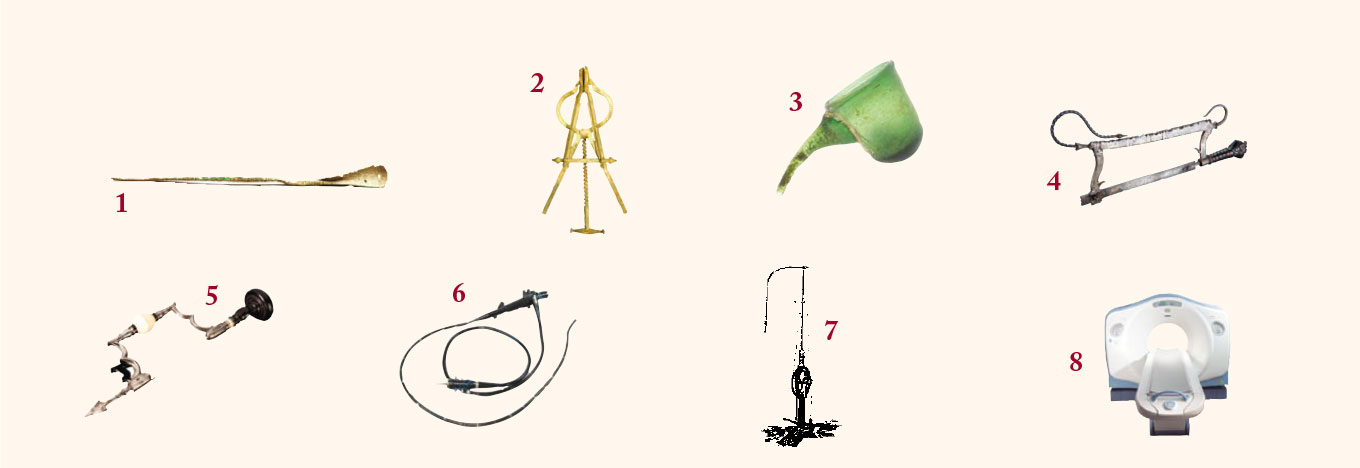
-
1) Bronze Probe
c. 600 bc: Egypt
Used to remove the brain through the nose during the first stage of mummification. Ancient Egyptians did not believe that the brain was an important organ.
-
2) Vaginal Speculum
c. 500 bc: Rome
Used to examine and treat vaginal and uterine conditions. The same basic apparatus was still in use in eighteenth-century Europe.
-
3) Cupping Glass
c. 1000: Persia
Used to suction skin to increase local blood flow, often before bloodletting occurred. Sunni Islam teaches that, if performed at the right time, cupping can cure any blood disease.
-
4) Surgical Saw
c. 1500: Europe
Used to amputate limbs wounded in battle, a common occurrence with the spread of gunpowder in the 1300s. Effective anesthesia did not emerge in European surgery until the nineteenth century.
-
5) Brace and Bit Cranial Trephine
c. 1850: Germany
Used to drill holes in the skull to treat various ailments, ranging from headaches to convulsions. Decorative details fashionable for such instruments at this time created stylish homes for dirt and germs.
-
6) Foot-Treadle Dental Drill
1875: United States
Used to treat decayed teeth. This forerunner to modern dental drills was inspired by the inventor’s mother’s sewing machine.
-
7) Colonoscope
c. 1990: Japan
Used to see inside the colon and rectum and snip off overgrown tissue. Patients must be on a clear liquid diet for several days before this flexible tube with a camera on the end is inserted into the anus and passed through the rectum to the end of the colon.
-
8) Computed Tomography (CT) Scanner
2009: United States
Used to produce three-dimensional images of internal organs that aid in the diagnosis of serious medical conditions, such as heart disease and cancer. It involves levels of radiation exposure that may also, in rare instances, cause cancer.